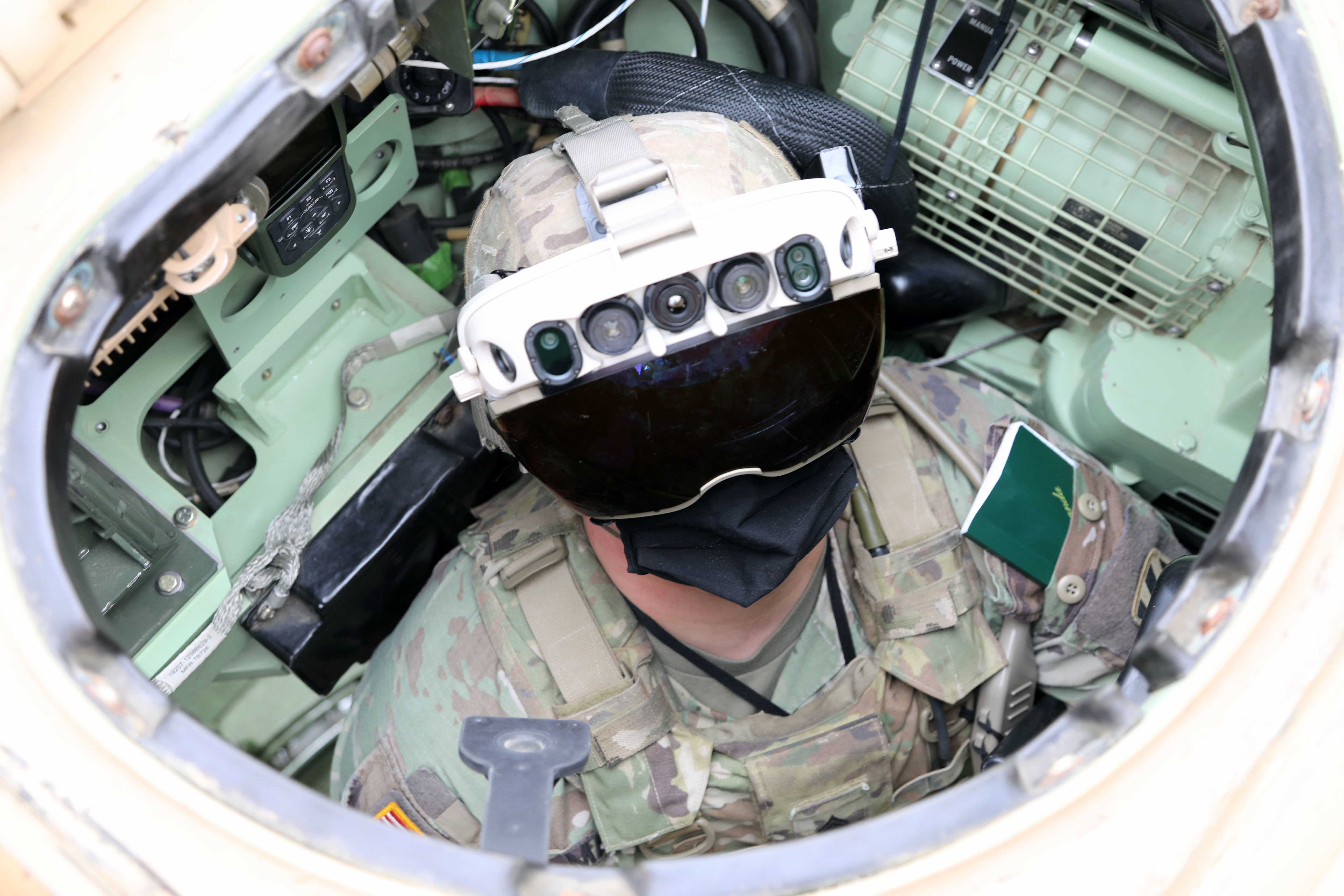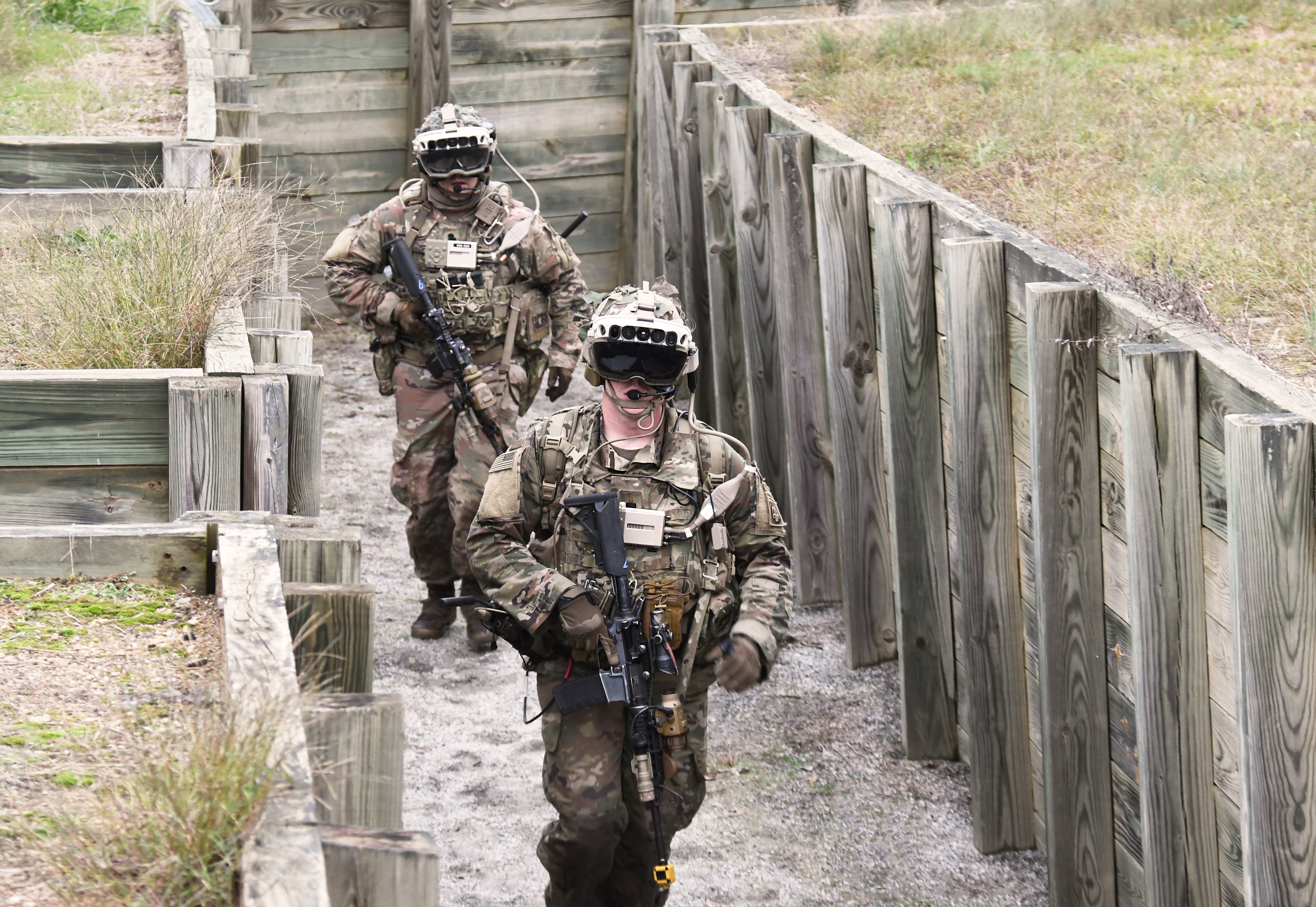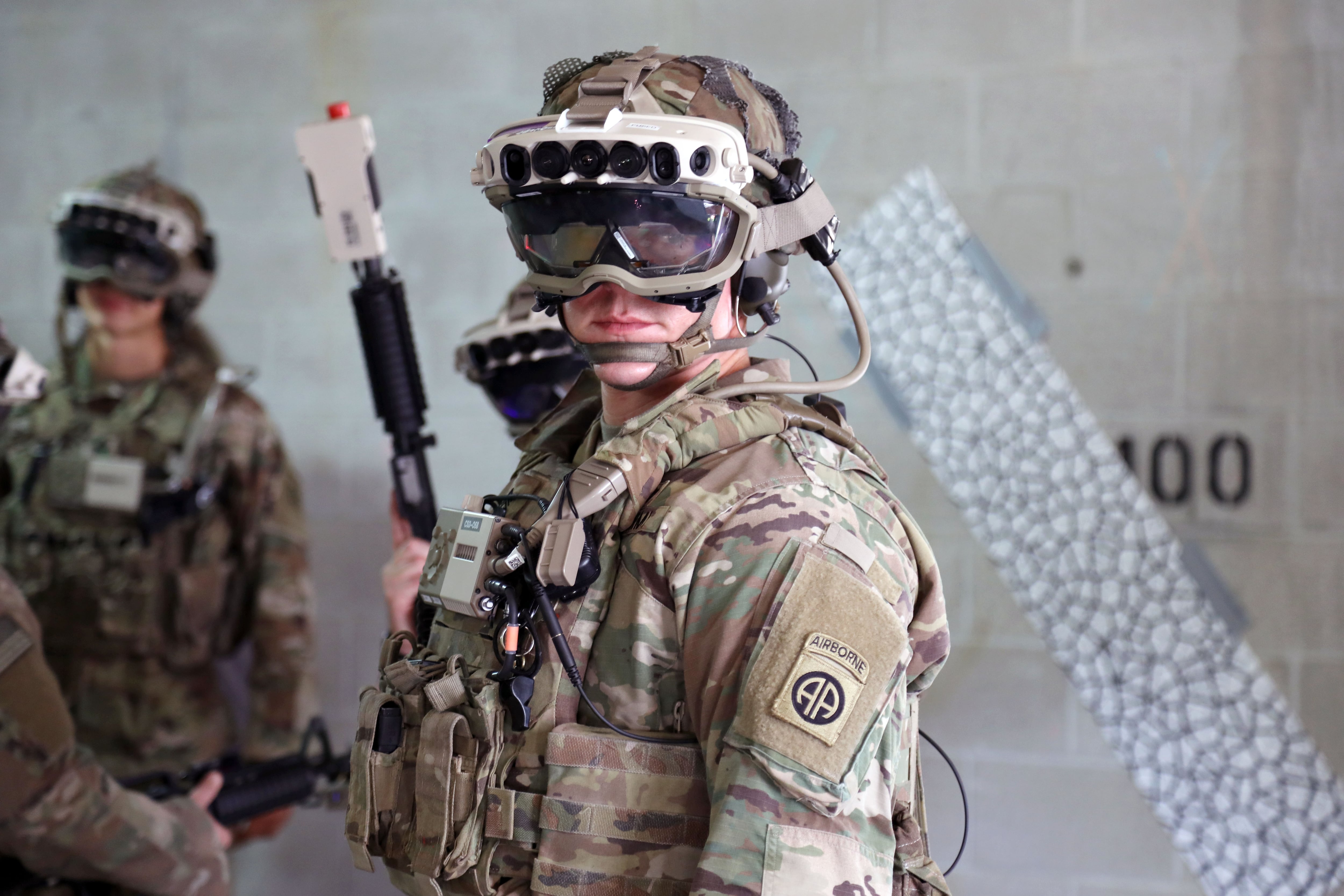The Army has slightly delayed a portion of work being done on its futuristic “mixed reality” goggles to improve consistency across devices, moisture control and improved range of view, according to officials involved in the program.
The Integrated Visual Augmentation System, or IVAS, was scheduled for an operational test this fall, but that has been pushed to May 2022.
That also delays the first unit to be equipped with the goggles from mid-fiscal 2022 to September 2022, the end of the fiscal year.
The device has used the Microsoft HoloLens platform to build a goggle capable of rapid target acquisition, navigation, target marking and a host of other features.
Earlier this year, the Army announced a $21.8 billion contract with Microsoft under the IVAS program.
Maj. Gen. Anthony Potts, head of Program Executive Office-Soldier, spoke with Army Times on Thursday about the shift, which was announced in an official release the same day.
RELATED

Potts said that his team, has been working with Army’s Night Vision Labs and Microsoft throughout the project since 2018.
Here is the current IVAS schedule, according to Program Executive Office-Soldier:
- October 2020: Soldier Touchpoint 3
- December 2020: Rapid fielding decision
- January 2021: Vehicle integration with Strykers and Bradleys.
- February 2021: Cold weather test
- March 2021: Production award, tropical weather test
- April 2021: Soldier Touchpoint 4
- July 2021: Criteria before planned operational test user jury provided
- September 2021: Vehicle integration again with the Bradley, focused on adversarial electronic warfare and cybersecurity.
- May 2022: Operational test
- September 2022: First unit equipped
In the lead-up to tests this August, Potts said there were inconsistencies in some of the heads-up displays. The issue, at times, caused a “screen door effect,” meaning the image resolution had a kind of gridded view.
The technicians narrowed the problem down to moisture content in the system, Potts said. And developers have a solution.
Another hurdle involved the field-of-view. Even the best goggle devices, a 40-degree field-of-view was the best range achieved, according to Potts. The IVAS program aimed to double that to an 80-degree field-of-view.
The problem, Potts said, was that pushed the boundaries of what waveguide technology is capable of at this time.
The wider field-of-view caused a stretching effect that slightly misaligned imagery in the mixed reality view.
Potts likened it to stretching out a balloon and seeing a distorted view. Though it’s nearly indiscernible, the human eye constantly tries to reconcile the misalignment, which can cause problems.

Though the issues were not deal breakers on delivering the device, Potts said that he informed the Army Acquisition Executive Office and senior leadership that he thought it best to work out those problems while continuing efforts on other elements of the goggle.
Other work that is going according to schedule, Potts said, includes stabilizing software sets, single-channel data radio linkage, tactical cloud packages and overall system integration.
“If six or nine more months gives us a really good, much better display quality,” then the delay was worth it, Potts said.
“Nobody remembers how long it took them to get the Apache to the field,” Potts added. “All they know is it’s the greatest attack helicopter in the world.”
For now, the work being done is based on feedback from various members of the Army’s Night Vision Labs and Microsoft, as well as extensive modeling and simulations to find fixes, according to Potts.
“This is ... responsible program management,” Potts said. “We don’t want to go ahead and produce those systems yet. We need to make the modifications we need to clean up the display and reliability.”
The first user jury is planned between January and February, which will help determine if the fixes worked.
“Modeling and simulation say this is going to work but we’re going to be responsible for taxpayer dollars,” Potts said.
He added that senior leaders all the way to the Army secretary were supportive of working out the kinks in the display before pushing production. If the simulation fixes don’t work, Potts said they will have more decision points.
They’ve backed down the field-of-view to what is likely to be about 70 degrees. And the original 80-degree target? It’s probably not necessary, Potts said.
That’s because the goggle has to be designed with baffles, a blocker that prevents light leakage so adversaries won’t spot that all-too-familiar goggle glow on the face of the user.
They found in evaluations that the baffles limited the field-of-view to about 70 degrees already, Potts said.
Even with the display glitches, soldiers have been using IVAS in evaluations and ripping through land navigation courses in record time, according to Potts.
Todd South has written about crime, courts, government and the military for multiple publications since 2004 and was named a 2014 Pulitzer finalist for a co-written project on witness intimidation. Todd is a Marine veteran of the Iraq War.




